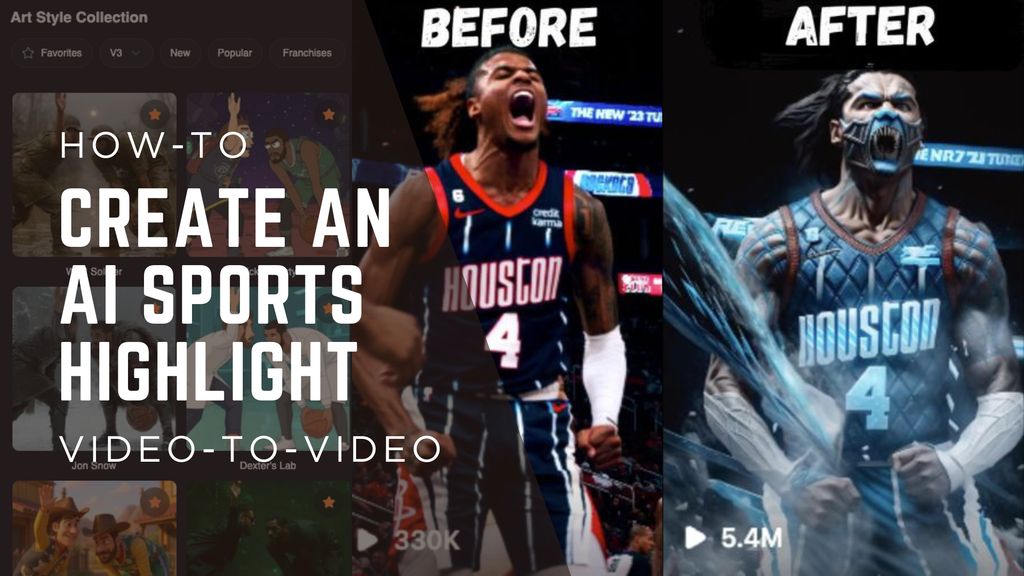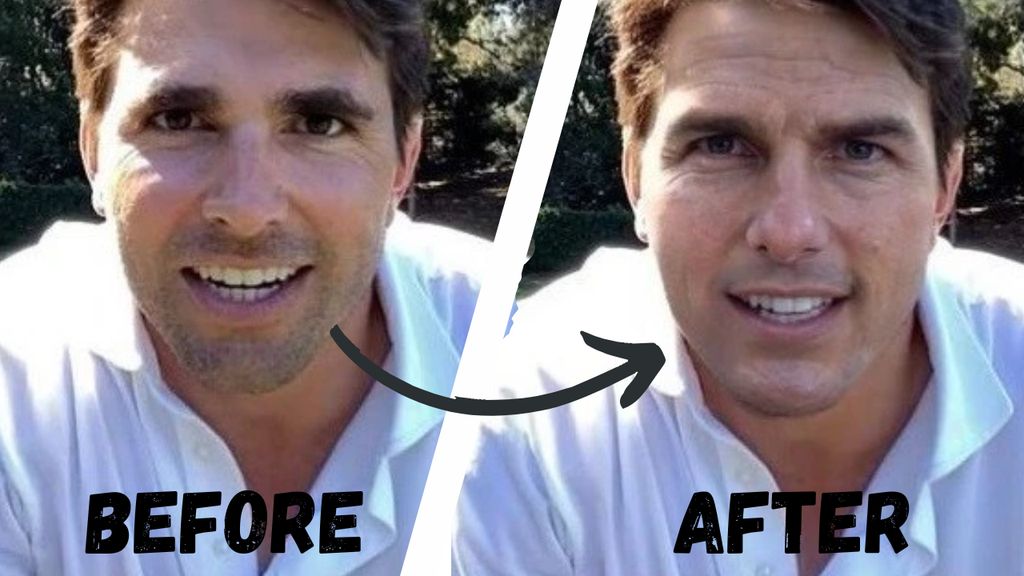Best Video Formats for YouTube: A Beginner-Friendly Guide


Uploading videos to YouTube in the right format can make a big difference in quality. YouTube supports many video formats and will always re-process your video after upload. To ensure your viewers get the best experience, it's important to upload videos using optimal settings. This guide breaks down file types, encoding settings, resolution, aspect ratio, audio, bitrate, and other factors in simple terms. Follow these tips and your content will look and sound great on YouTube!
Recommended Video File Types (Formats)
YouTube accepts a wide range of video file formats (about 16 types) – including common ones like MP4, MOV, AVI, WMV, FLV, WebM, and even high-quality production formats like ProRes or DNxHR. However, not all formats are equal. Here are the best choices:
- MP4 (MPEG-4 Part 14) – Highly recommended. YouTube itself recommends using an MP4 file for uploads as the first choice. MP4 is a modern container format that efficiently holds video (typically encoded with H.264) and audio (AAC) together. It provides excellent quality with relatively small file sizes, making uploads faster without sacrificing clarity.
- MOV (QuickTime Movie) – Good alternative. If you can't use MP4, YouTube suggests MOV as the next best option. MOV files (common on Apple devices) can also contain high-quality video and audio. They tend to have larger file sizes than MP4, but still preserve quality well. YouTube treats MOV files similarly to MP4 in most cases.
- Other Formats (AVI, WMV, etc.) – Accepted but not ideal. YouTube will accept older or less-compressed formats like AVI, MPEG-2, or WMV, but these can result in unnecessarily large files or potential quality loss. In fact, YouTube notes that formats outside MP4/MOV “won't hold nearly the quality” of video and audio needed for good uploads. If your video is in an unusual format, it's best to convert it to MP4 or MOV for upload.
Tip: If your editing software exports a different format (for example, some programs default to AVI), consider converting the final video to MP4 before uploading. This ensures YouTube receives it in a friendly format and speeds up the processing of your video online.
Ideal Video Encoding Settings (Codecs)
A codec is the method used to compress and encode your video. Using the right codec keeps quality high while keeping file size manageable. YouTube’s recommended encoding settings are focused around modern, efficient codecs:
- H.264 (AVC) – Recommended standard. H.264 is the most widely supported video codec for YouTube and is strongly recommended for uploads. It delivers great quality at reasonable bitrates. When you export your video as MP4, it will typically use H.264 by default. YouTube's official guidelines specifically list H.264 as the ideal video codec for uploading, and most editing programs have a "YouTube" preset that uses this codec. In short, stick with H.264 for trouble-free uploads and good quality.
- H.265 (HEVC) – Optional advanced codec. H.265 is a newer codec that can produce smaller file sizes than H.264 for the same quality (about 50% better compression). YouTube does support HEVC (the .HEVC or .h265 format is on YouTube’s accepted list). If your camera or editing software outputs H.265 and you want to save upload time or disk space, you can upload that. However, H.265 isn’t required – YouTube will not give you better quality just because you used H.265. It will still re-encode the video on their end. For most beginners, if you’re not sure, you can stick to H.264 and be confident it’s accepted and recommended.
- VP9 (WebM) – YouTube’s streaming codec. VP9 is an efficient open codec that YouTube itself uses to stream videos at high resolutions. YouTube accepts videos in WebM format (which use VP9 or VP8 codecs), but creating a VP9 WebM file is more complex and usually not necessary. The good news is YouTube will automatically transcode your uploaded H.264 video to VP9 for playback on the platform. This means you don’t need to manually encode to VP9 – just upload a high-quality MP4 and let YouTube handle it. (Advanced creators sometimes upload in VP9 or even the newer AV1 codec to preserve quality, but this is beyond the needs of most beginners.)
Practical encoding tips: Ensure your export settings use progressive scan (no interlacing) and a high-quality profile for H.264 (e.g. High Profile) for best results. Progressive scan means each frame is a full picture (as opposed to interlaced video, which can cause combing lines). Virtually all modern cameras record in progressive, but if you see an "interlaced" setting, turn it off for YouTube. Using the recommended codecs (H.264 video and AAC audio) in an MP4 container covers 99% of use cases and is exactly what YouTube expects.
Suggested Resolution and Aspect Ratios
Resolution refers to the frame size of your video (width x height in pixels), and aspect ratio refers to the shape of the frame (the ratio of width to height). YouTube can play videos of many resolutions, but you should aim for high resolution and the standard aspect ratio to make your video look best.
- Use HD or higher resolution: It’s recommended to upload videos in at least HD resolution or above. For example, 1280 x 720 (720p) is the minimum for HD, and 1920 x 1080 (1080p) is Full HD. If you can, go for 1080p as it provides a sharp image on most screens. YouTube explicitly encourages using the original high-resolution video if possible. Higher resolutions like 1440p (2K) or 2160p (4K) are even better if your camera and editing process support them. Uploading a higher resolution video will give viewers the option to watch in better quality, and YouTube will generate lower-resolution versions as well. (Keep in mind higher resolution files are larger, so ensure your internet upload can handle it.)
- Standard aspect ratio (16:9): YouTube’s player is optimized for a 16:9 aspect ratio (widescreen). This is the shape of most cameras’ footage and standard HD resolutions (e.g., 1920x1080 is 16:9). Make sure your video is exported in 16:9 to avoid any display issues. If a video has a different aspect ratio (like 4:3 or a tall vertical video), YouTube will pad it with black bars on the sides or top/bottom. For example, a 4:3 video (older TV shape) will appear with vertical black bars, and a very wide video might have horizontal bars. These bars can be distracting and make your content look less professional. Sticking to 16:9 ensures your video fills the YouTube player nicely with no blank areas.
- Vertical and square videos: What if your content is vertical (like a phone video) or square? YouTube does support other aspect ratios for certain content. YouTube Shorts, for instance, are vertical videos usually in a 9:16 ratio (such as 1080 x 1920). If you're specifically creating a Short or vertical video for mobile viewing, use 9:16 so it displays full-screen on phones. YouTube will show vertical videos centered with maybe subtle black bars on desktop, but on mobile they appear full-screen. Square (1:1) videos will play with side padding. Generally, only use non-16:9 ratios if it’s intentional for the content format. For regular YouTube videos, always prefer widescreen 16:9 format.
- Frame size and quality: Don’t artificially add black bars or stretch your video to make it 16:9 – instead, crop or adjust in editing if needed. For example, if you have a 4:3 video, you could place it on a 16:9 canvas with designed background instead of plain black bars. But as a beginner, the simplest route is to record and edit in 16:9 from the start. All modern cameras (and even phones held horizontally) will produce 16:9 video by default.
In summary, choose the highest resolution you can reasonably upload (1080p is a great standard, 4K if available), and keep the aspect ratio at 16:9 for the best viewing experience on YouTube.
Best Audio Settings (Bitrate, Format, Channels)
Audio quality is just as important as video. Poor audio can turn viewers away quickly. YouTube recommends using high-quality audio in a compatible format to ensure your sound comes through clearly.
- Audio Codec: Use AAC-LC audio codec. AAC-LC (Low Complexity AAC) is the standard audio format for YouTube uploads and is part of the MP4 container format. If you export to MP4, your editing software will usually use AAC automatically for audio. AAC provides good sound quality at relatively low bitrates and is widely supported. (YouTube also accepts other audio codecs like MP3 or Opus, but AAC-LC is the most straightforward and recommended.)
- Channels: Export your audio in stereo (2-channel) format. Most videos (vlogs, tutorials, music, etc.) use stereo audio. YouTube supports stereo and even 5.1 surround sound if you have it, but if you upload 5.1, YouTube may downmix it to stereo for many viewers unless they are on a device/setup that supports surround. For simplicity, stick to stereo. Avoid uploading a mono track if possible; if your source is mono, exporting as stereo (dual-channel mono) is fine. Stereo ensures a fuller sound and compatibility across all devices.
- Sample Rate: Use 48 kHz sample rate for audio. 48 kHz is the standard for video audio (the same rate used in DVDs, broadcast, etc.) and is what YouTube expects. Many audio recording devices or music might use 44.1 kHz (CD quality), which YouTube will accept, but 48 kHz is ideal to match video standards. If your project is in 44.1 kHz, you don't need to worry too much – YouTube will convert it – but if you have a choice, set your project and export to 48 kHz to be consistent with YouTube’s recommendations.
- Audio Bitrate: Aim for a high audio bitrate to preserve quality. Audio bitrate determines the clarity and fidelity of sound (higher means better quality, but larger file). YouTube’s guidelines suggest using 128 kbps at minimum for mono, and around 384 kbps for stereo audio. In practice, common settings are 192 kbps or 256 kbps for stereo which are usually fine. If your editor lets you, using 320 kbps or 384 kbps AAC for stereo will ensure virtually no quality loss on upload. The file size impact is small compared to video, so it's safe to use a high audio bitrate. For example, a stereo track at 384 kbps AAC will meet YouTube’s highest recommendation for audio quality. This helps music, dialogue, and effects sound clear after YouTube processes the video.
Note: YouTube will re-encode your audio along with video, potentially to formats like Opus for streaming. Starting with good quality audio means the final result on YouTube will still sound good. Also, ensure your audio is not clipping or too low in volume before exporting – always monitor your sound during editing.
Optimizing Video Bitrate for Quality and File Size
Video bitrate is the amount of data used to encode each second of video, usually measured in Mbps (megabits per second). It is a key factor in video quality and file size. A higher bitrate means more data to represent the video, often yielding higher quality (especially in fast-motion or detailed scenes), but also a larger file. A lower bitrate produces a smaller file but can introduce blockiness or blur if set too low. The goal is to find a balance: high enough to maintain quality, but not so high that the file is excessively large for no benefit.
Here are some practical guidelines for bitrates when uploading to YouTube:
- Follow YouTube's recommendations: YouTube provides suggested bitrate ranges for various resolutions and frame rates. For example, for a standard 1080p (Full HD) video at 30 frames per second, a bitrate of roughly 8 to 10 Mbps is considered ideal. This will preserve very good quality for HD. If your 1080p video is 60 fps or has a lot of motion, you might increase towards ~12 Mbps to maintain clarity in fast movement. For 720p HD, around 5 Mbps can be sufficient for 30fps. These numbers ensure good quality while keeping file sizes reasonable.
- Higher resolutions need higher bitrates: If you're uploading 4K (2160p) video, the bitrate should be much higher to retain detail. YouTube suggests about 35–45 Mbps for 4K at 24-30fps, and up to 53–68 Mbps for 4K at 60fps. These high bitrates preserve the ultra-sharp quality of 4K footage. Similarly, a middle-ground resolution like 1440p (2K) might use around 15–24 Mbps. Don’t be alarmed by the large numbers for 4K – if your camera produces 4K, it likely already uses a high bitrate. Just make sure not to drastically lower it when exporting.
- Use variable bitrate (VBR) encoding: Most editing programs let you choose constant or variable bitrate. Variable Bitrate is recommended because it will allocate more bits for complex scenes and fewer for simple scenes, optimizing quality and file size. YouTube does not require a fixed bitrate; in fact, their guidelines state no strict limit on bitrate as long as it’s within reason. Using VBR 1-pass or 2-pass (two-pass gives slightly better optimization at the cost of longer export time) can reduce your file size without hurting quality. For beginners, simply choosing the preset for YouTube or a high-quality export will usually use VBR by default.
- Don't go too low: If you choose a bitrate much lower than recommended, your video may look fine in some parts but blocky in others after uploading. YouTube will compress your video further, so a low-quality source will get worse once YouTube processes it. For instance, uploading a 1080p video at only 2 Mbps will likely result in noticeable artifacts after YouTube re-encodes it. It's better to be on the higher side of the recommended range to give YouTube a good quality source. Remember, YouTube cannot increase the quality of a video beyond what you provide – it can only maintain or decrease it.
- Don't go needlessly too high: On the flip side, using an extremely high bitrate (or even lossless video) for upload can lead to huge files that are slow to upload, with diminishing returns in quality. YouTube will not simply use your exact file – it will compress it anyway. For example, uploading a ProRes or other near-uncompressed video might slightly improve final quality, but beyond a certain point, the difference between that and a high-bitrate MP4 is negligible. YouTube themselves state that past a certain quality, the visual improvements won't be noticeable while the file size grows a lot. As a rule of thumb, stick to YouTube's recommended bitrates. There's no benefit in uploading a 50 Mbps 1080p video when YouTube will downscale it to ~8 Mbps for streaming. Save yourself the time – use a reasonable bitrate.
In summary, choose a bitrate that matches your video’s resolution and complexity. You can use these rough targets for guidance: about 8-12 Mbps for 1080p, 15-24 Mbps for 1440p, and 35+ Mbps for 4K. This will ensure your video looks great and uploads in a reasonable time. Most editing software has export presets like "YouTube 1080p" which automatically set a good bitrate for you – those are a safe bet if you’re unsure.
(Note: Bitrate is one factor; resolution, frame rate, and codec also affect quality. Always view your exported video on your computer before uploading to make sure the quality looks good in scenes with motion and detail.)
Common Mistakes to Avoid When Uploading Videos
Even experienced creators make technical mistakes that can affect video quality on YouTube. Here are some common mistakes and how to avoid them:
- Using an unsupported or non-optimal file format: While YouTube accepts many formats, using something other than the recommended MP4/MOV can lead to larger files or quality issues. Avoid uploading in obscure or outdated formats. For instance, if you upload an old AVI or MPEG-1 file, it might work, but the video/audio quality could be inferior. It's best to convert your video to MP4 or MOV if it's not already in one of those formats. This ensures maximum compatibility and quality. (In short: stick to MP4 with H.264/AAC – it's the safest choice.)
- Wrong aspect ratio or resolution (black bars): Be careful to export your video in the correct aspect ratio (16:9 for standard YouTube videos). A common mistake is uploading a video that isn't 16:9, resulting in black bars on the sides or top/bottom of your video. For example, if you edit a vertical video but upload it as a normal video, it will appear with thick black bars on the sides, which looks unprofessional. Always check your final output resolution. If you see dimensions that don't match a 16:9 ratio (such as 1080 x 1080, which is square, or 1280 x 1024, etc.), adjust them before uploading. This way your content fills the YouTube frame as intended without distracting borders.
- Not deinterlacing interlaced video: Interlaced video (often from older camcorders or some TV footage) shows visible horizontal lines during motion. YouTube recommends using progressive scan (no interlacing). If you have interlaced footage (sometimes labeled 1080i or 480i), make sure to deinterlace it in your editor or export settings. Most modern cameras shoot progressive by default (1080p, 4Kp, etc.), so this mostly applies if you are working with older media. Failing to deinterlace can make your video look bad on YouTube, because the platform will not automatically remove those combing lines. Always choose progressive format on export.
- Low quality or heavily compressed uploads: Some creators try to save bandwidth by uploading a very low bitrate or low resolution video, hoping it will be "good enough." This is a mistake because YouTube will recompress the video, which exaggerates any flaws in the source. If you upload a low-quality video, it might become even blockier or blurrier after YouTube processes it. As mentioned earlier, YouTube urges users to upload videos in as high quality as possible, as close to the original source as you can. Do not upload a 360p or 480p video if you have an HD version available, and do not crank down the bitrate too much in an attempt to shrink the file. This only hurts the final quality. Always give YouTube the best quality you reasonably can – you can't fix quality later on the platform.
- Excessively large or uncompressed files: On the flip side, uploading huge uncompressed files (like an uncompressed AVI or very high-bitrate file far beyond recommendations) is usually unnecessary. YouTube will not preserve all that extra information beyond its streaming limits. For example, uploading a 50 GB ProRes file vs a 2 GB high-bitrate MP4 might result in virtually the same visible quality on YouTube, but one will take dramatically longer to upload. YouTube even says that beyond a certain point, the differences become indiscernible and you're just dealing with a bigger file. So don't waste time uploading massive files thinking your YouTube video will look magically better – it likely won't, once YouTube compresses it. Use a high quality MP4, but within reason (follow the earlier bitrate guidelines). This will save you time and headaches.
- Ignoring audio quality: Some uploaders might accidentally use a poor audio format (like low-bitrate MP3 or even no audio at all) without realizing it. Make sure your audio is encoded in AAC at a decent bitrate as discussed in the audio section. A common mistake is leaving the audio in a project at a very low bitrate or single-channel by accident. Always double-check your audio settings on export, especially if your workflow includes YouTube automation, to prevent errors from propagating across multiple uploads. A video with great visuals can be ruined by muffled or tinny sound. YouTube will accept even 128 kbps audio, but for music or rich sound you want higher (256-384 kbps). Also ensure your audio is in sync with the video before uploading; mismatched audio/video can happen if frame rates are handled incorrectly in editing (fix by exporting at the proper frame rate). Sticking to YouTube's recommended audio codec and settings avoids any sync or quality problems.
- Changing frame rate or other properties unnecessarily: Another mistake is trying to convert your video to a different frame rate or format thinking it will "improve" it. For instance, if you shot at 30 fps, don't manually convert it to 60 fps – that won't add real quality (you can't create new frames out of nothing, it usually just duplicates frames and can cause motion to look odd). Similarly, don't reduce 60 fps to 30 fps just for upload; YouTube can handle 60 fps. Always export with the same frame rate you recorded in for best results. YouTube supports common frame rates like 24, 25, 30, 50, 60 fps, etc., so use the native frame rate of your footage. This preserves the natural motion and avoids any stuttering or artifacts that conversion might introduce.
By avoiding these mistakes, you ensure that your uploaded video retains the best possible quality. In short: use the right format, follow recommended settings, and double-check your output before uploading. If you stick to the guidelines, you "should not have any trouble with losing video quality or audio not lining up" on YouTube.
Additional Factors Affecting YouTube Video Quality (Frame Rate, Color Depth, etc.)
Beyond the basics above, there are a few additional technical factors that can impact your video’s quality on YouTube. For most beginners, these are automatically handled if you follow the earlier advice, but they’re worth understanding:
- Frame Rate: We touched on this in mistakes, but to reiterate: Always keep your video at the original frame rate it was filmed in when uploading. If you shot video at 30 fps, upload at 30 fps; if you shot at 60 fps (common for gaming or sports footage), upload at 60 fps. YouTube supports frame rates up to 60 frames per second for regular videos, and it will play them back at the correct speed. The platform is optimized for standard frame rates like 24, 25, 30, 50, 60. Using a higher frame rate can make motion (like gameplay or action scenes) look smoother, so definitely take advantage of 60 fps if your source is 60 fps. However, don't try to artificially increase a lower frame rate to 60 – it won't truly add smoothness and can cause weird motion interpolation effects. Also, make sure your video is not interlaced (use progressive frames) for better clarity. If your camera uses a non-integer frame rate like 23.976 or 59.94 (common in some formats), that's fine – just export with the same value; YouTube can handle those as well. In summary, frame rate should be "the same rate the video was captured at" for optimal results.
- Color Depth and Dynamic Range: Most standard videos are 8-bit color, which is the default for H.264 and what YouTube expects for standard dynamic range (SDR) content. This is typically 16.7 million colors and is plenty for most uses. YouTube does support 10-bit (or higher) video if you have HDR (High Dynamic Range) footage. In fact, 10-bit is required to upload HDR videos (along with the appropriate color primaries and metadata). If you're a beginner, you likely don't need to worry about 10-bit or HDR unless you know your camera shoots HDR and you want to maintain it. If you do have HDR content, be aware you'll need to follow YouTube's specific HDR upload guidelines (including using supported codecs like HEVC or VP9 Profile 2 and uploading an HDR metadata file or using the correct color space). For everyone else, 8-bit SDR video is fine – this is what the vast majority of YouTube videos are. In practical terms, just export normally (which will be 8-bit unless you explicitly use a higher setting). The benefit of higher bit depth is avoiding color banding in gradients and preserving detail in highlights/shadows if using HDR. But if your content is standard, you don't need to do anything special. YouTube will treat your video as SDR and it will look as intended. One common question is "should I upload in 10-bit even if it's SDR?" It usually won't help on YouTube because YouTube’s SDR streams are 8-bit, and banding is more related to compression and chroma subsampling (4:2:0) than bit depth in many cases. So, stick to the standard unless you are specifically producing HDR content.
- Color Profile and Gamut: For normal videos, use the standard color profile (Rec. 709 color space). This is default for HD video. If you use a strange color space, colors might look off on YouTube. Again, this mostly applies to HDR (which uses Rec. 2020 color) or some cinematic projects. If you don't know what this is, you're likely already in Rec.709, which is correct. Ensure your export doesn’t have any unusual color tags. Most editing software will handle this automatically.
- Compression Artifacts: After upload, YouTube will generate several versions of your video at different resolutions and bitrates. Sometimes, you might notice that the streaming version on YouTube has a bit more compression (especially during very fast motion or in very dark scenes, YouTube's encoder may introduce blockiness). This is normal due to how YouTube delivers video. By uploading a high-quality file (as we've advised), you reduce the chance of noticeable artifacts. You can't control YouTube's compression, but you can control the quality of what you give it. Always review your video on YouTube after it finishes processing (choose the highest quality playback) to ensure it looks okay. If you spot quality issues, it might be worth adjusting your upload settings for future videos (for example, slightly raising the bitrate or using a different codec like uploading in H.265 or a higher resolution, which might trigger a higher-quality VP9 stream on YouTube).
- Audio factors: YouTube will downmix audio to stereo for viewers unless the device and video specifically support surround. If you uploaded a 5.1 surround track, check on a device that supports it (like a TV app) to see if it came through. If not, assume stereo. YouTube’s audio codec for streaming is often Opus at around 160 kbps for 1080p videos (and higher for 4K), so even if you upload 384 kbps, it may get compressed a bit. Still, starting with higher ensures that 160 kbps Opus (which is quite efficient) sounds as good as possible. In short, the viewer's audio will be good if your uploaded audio was good.
By paying attention to frame rate and color settings when preparing your video, you can avoid subtle quality issues. The key takeaway is to keep things in their original quality/form (don’t alter frame rate or color range unless needed) and let YouTube handle the final distribution encoding. YouTube is pretty advanced in handling different inputs as long as you give it a high-quality file.
Conclusion
Uploading to YouTube is as much about quality as it is about content. As a creator, you want your videos to look sharp and sound clear to engage your audience. The best video format for YouTube boils down to using MP4 with H.264 video and AAC audio, in a 16:9 aspect ratio at the highest reasonable resolution (HD or above). Ensure your audio is high quality stereo, and choose proper bitrate settings that balance quality with file size. Remember that YouTube will re-encode your upload anyway, so starting with a good source file is crucial. Avoid common pitfalls like weird formats, interlacing, or super low bitrates, and you'll sidestep most quality problems.
With these practical guidelines, even a beginner can confidently prepare videos for upload. In summary: use the recommended formats and settings and you'll get optimal results on YouTube. Now you can focus on creating great content, knowing it will come across in the best quality possible to your viewers. Happy uploading!




